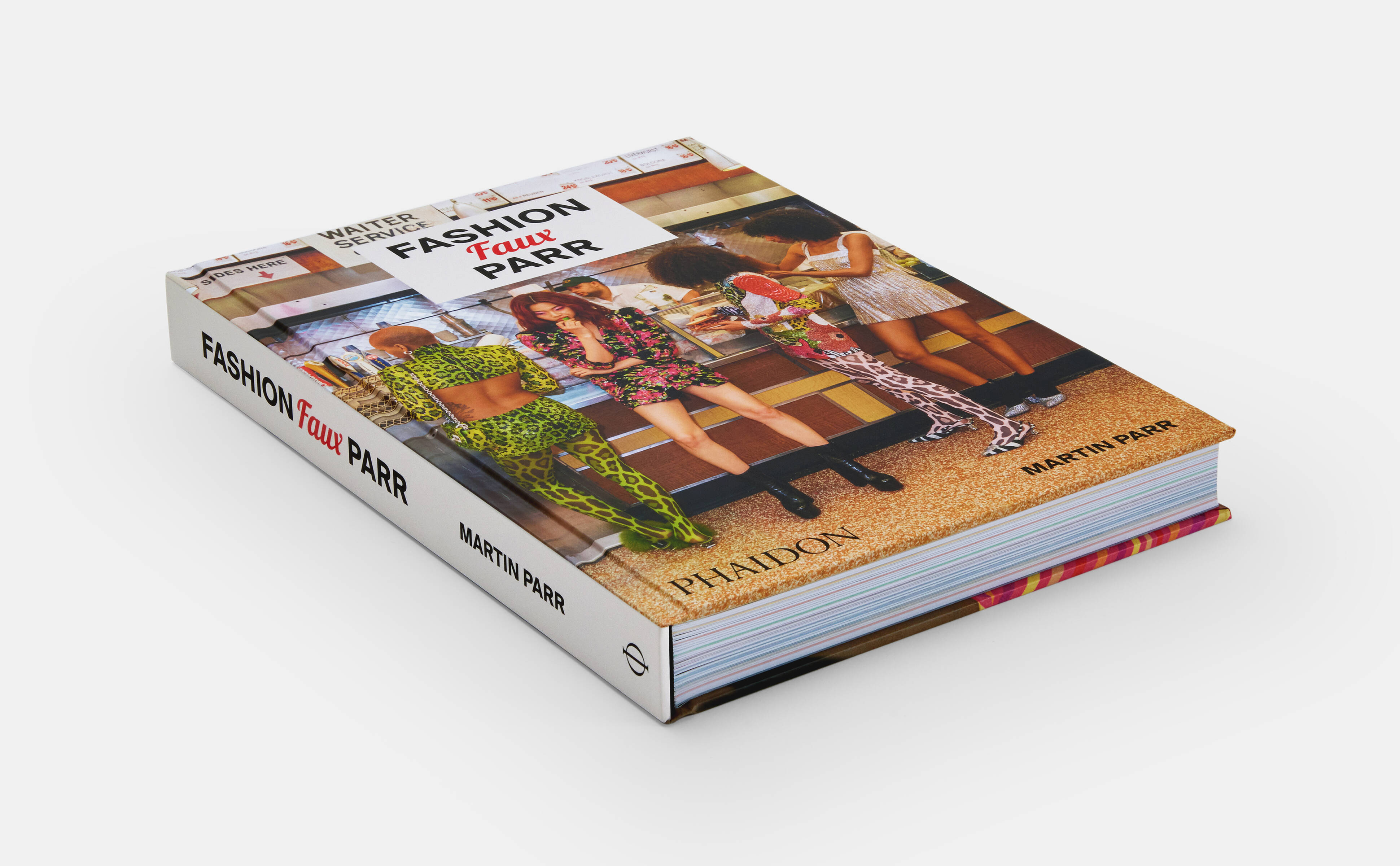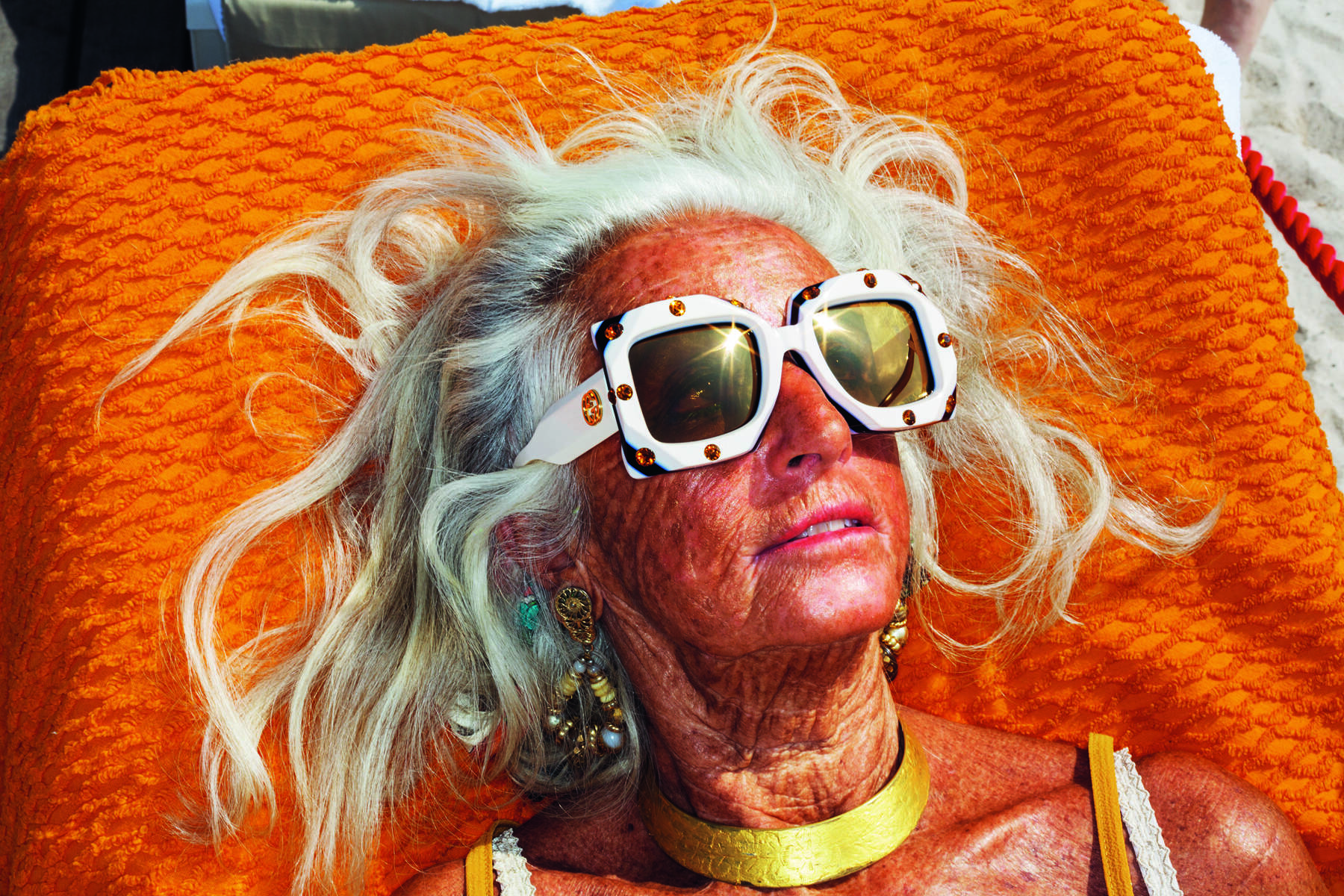
Martin Parr talks tells us about Fashion Faux Parr
Vogue, Gucci, (no Fiorucci) - the photographer's new book captures 30 years of his fashion photography
Martin Parr is renowned as one of the UK’s greatest photographers of human life - in all its shapes and sizes. However, he’s perhaps lesser known for another expanding body of work - his fashion photography.
Now, our new book, Fashion Faux Parr, (see what we did there?) gathers together the last three decades of Parr’s editorial, commercial, and advertorial, fashion photography, shot all over the world, for the first time ever.
Parr’s unique humour, and instantly recognisable style, is foregrounded throughout. Five figure accessories from blue chip fashion houses nestle on trays of cheap trinkets in a Senegal market or are wrapped around the leather-skinned bodies of sun worshipping seniors or placed in peril from excitable dog paws. Elsewhere, couture and street clothes hang exquisitely from the bony shoulders of the young and unconventionally beautiful.
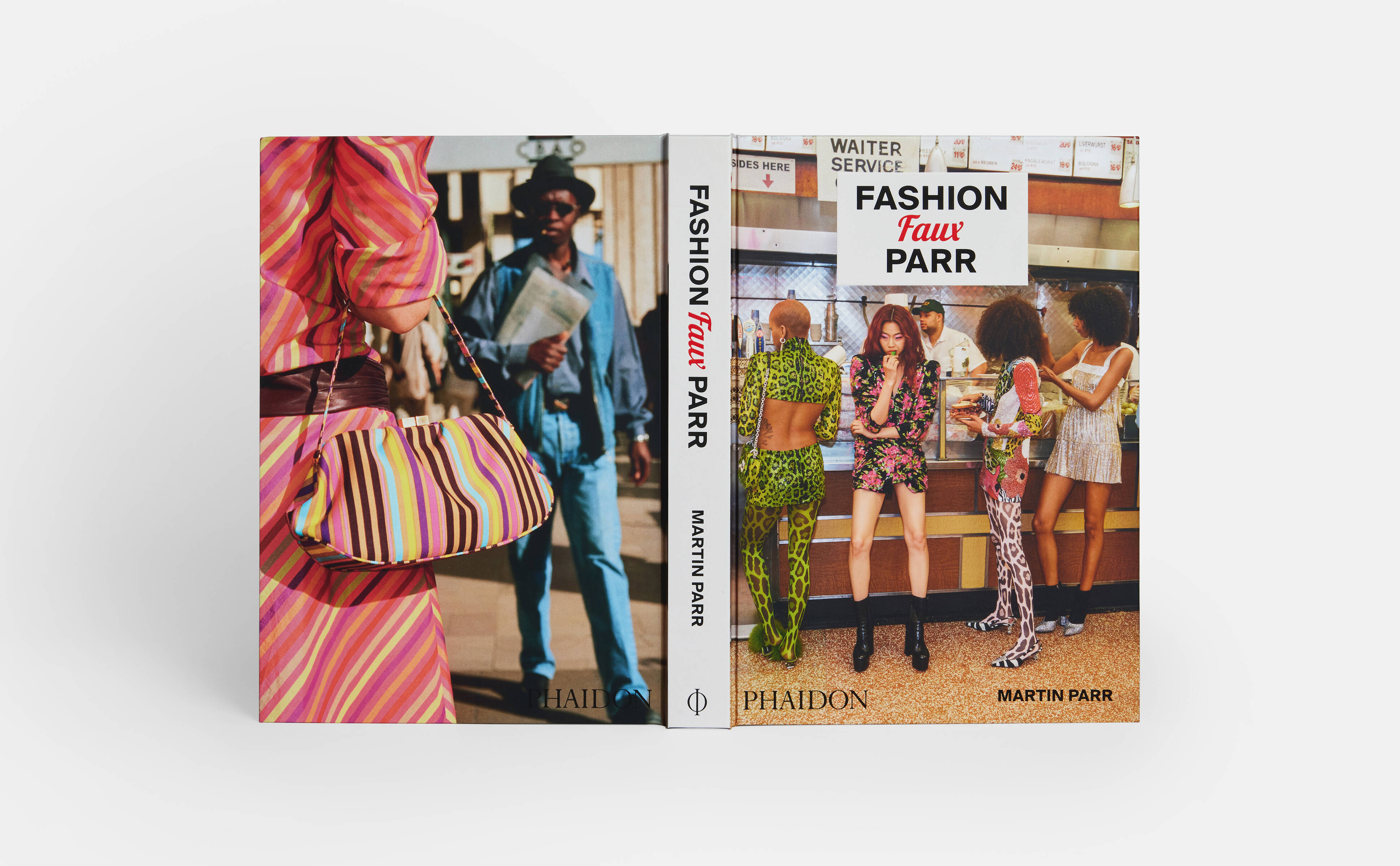
These images are complimented by facsimiles of some of his most inspired published editorial shoots, featured in magazines such as W and Jalouse, interspersed throughout and reproduced on lighter, uncoated paper stock to give the pages of the book a magazine-like feel.
The collection is set in context by two short essays. UK Savile Row designer and TV personality Patrick Grant contributes an introductory essay to Parr’s considerable fashion portfolio, while New York-based shoe designer and fashion writer Tabitha Simmons, who commissioned Martin to shoot an accessories feature in a flea market for American Vogue, talks us through what a day on a shoot with Martin Parr is actually like.
We sat down with Martin Parr at the Martin Parr Foundation in Bristol to ask him about his route into fashion photography, some of the memorable shoots he’s created and why they are so vital to the important work of his foundation.
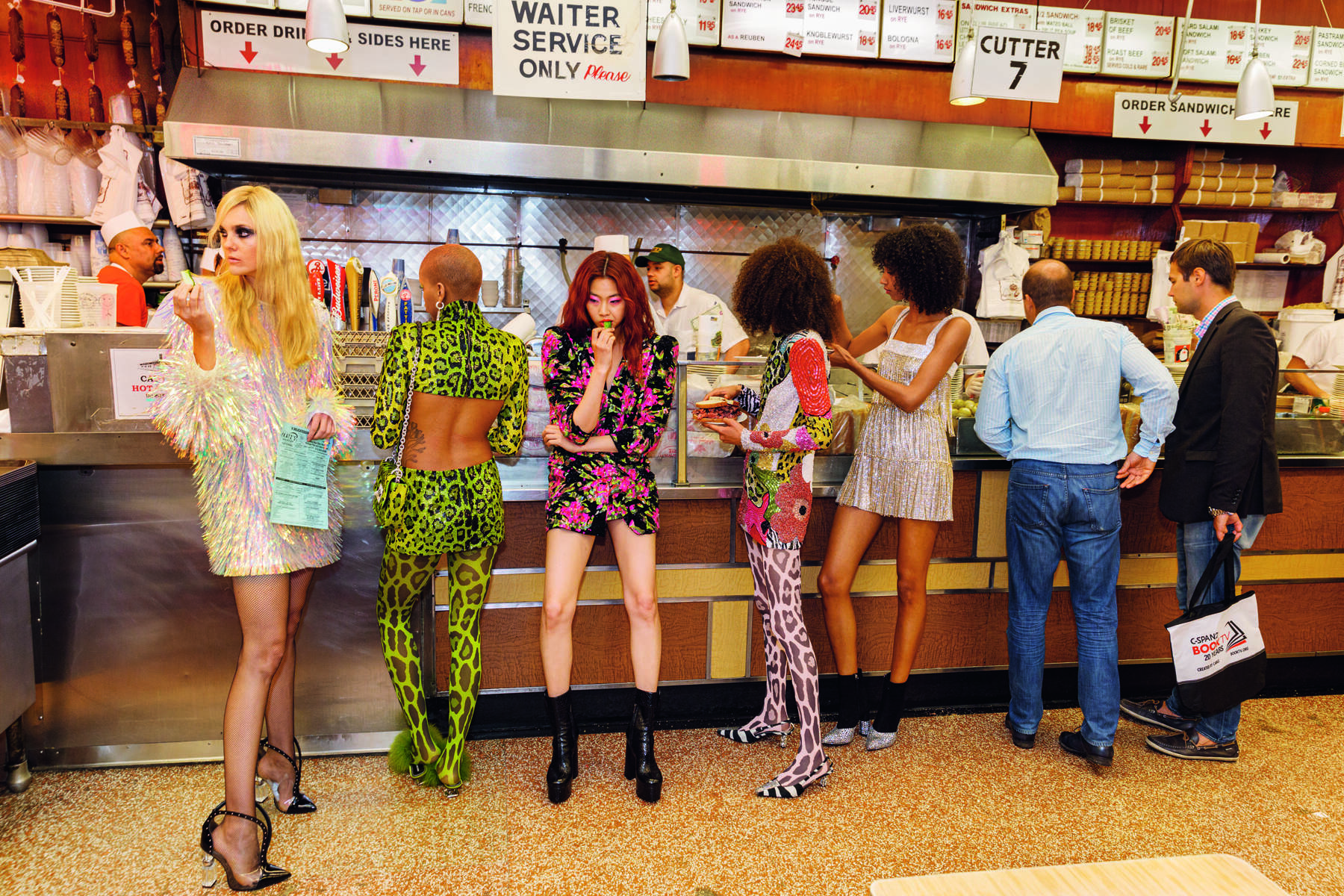 Katz's Delicatessen, New York, USA, 2018. Commissioned by Vogue USA. © Martin Parr
Katz's Delicatessen, New York, USA, 2018. Commissioned by Vogue USA. © Martin Parr
How did you feel when you got your first fashion commission? It was 1999 from Amica Magazine. Some of those pictures have survived and are in the book. It was very exciting. I’d never thought about fashion before until I was invited to do it. I thought this could be fun. And it was indeed fun. I’d never been to Rimini before. It was an interesting place and had very good settings for doing fashion shoots.
For the first time I was actually placing people in the frame. With most of my own work I just come along and photograph things as they are, I don’t change anything. Here I got a chance to change and push things around. I’d incorporate real life people into the shoot as well as the models. Sometimes they wouldn’t know they were being photographed.
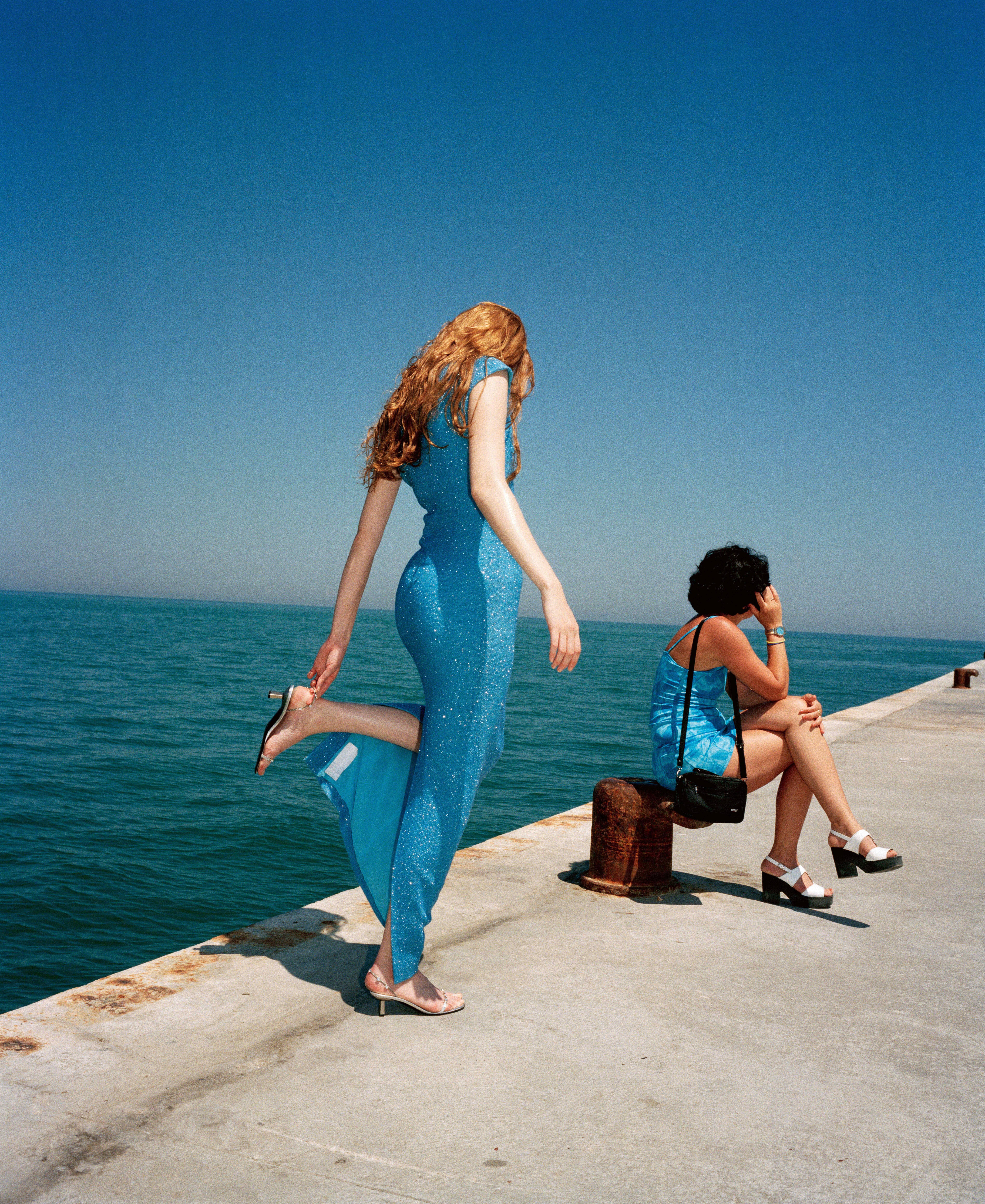 Rimini, Italy, 1999. Commissioned by Amica. © Martin Parr
Rimini, Italy, 1999. Commissioned by Amica. © Martin Parr
How do the shoots work? Is there a creative director who directs what you do? How much input do you have? There are two types of fashion shoots. First there are the commercial ones which are much more strictly controlled. You always have an art director present for commercial and for editorial shoots, but with a commercial shoot the agenda has been set up and approved by the client.
With editorial you have a lot more freedom. You can experiment and play around more. The art director is usually happy to go along with that spirit. It’s much easier in one sense doing editorial because you get more freedom versus more constraint with the commercial. But, of course, you’re much better paid with the commercial ones, so I don’t complain really.
And you know, you often suggest things as you go along, you can bend them a little. What everyone wants is a good picture. I want them to have a good Martin Parr picture and they need to have something that shows the clothes. That’s the bottom line really. And as well as that if it’s an interesting photo then everyone’s happy.
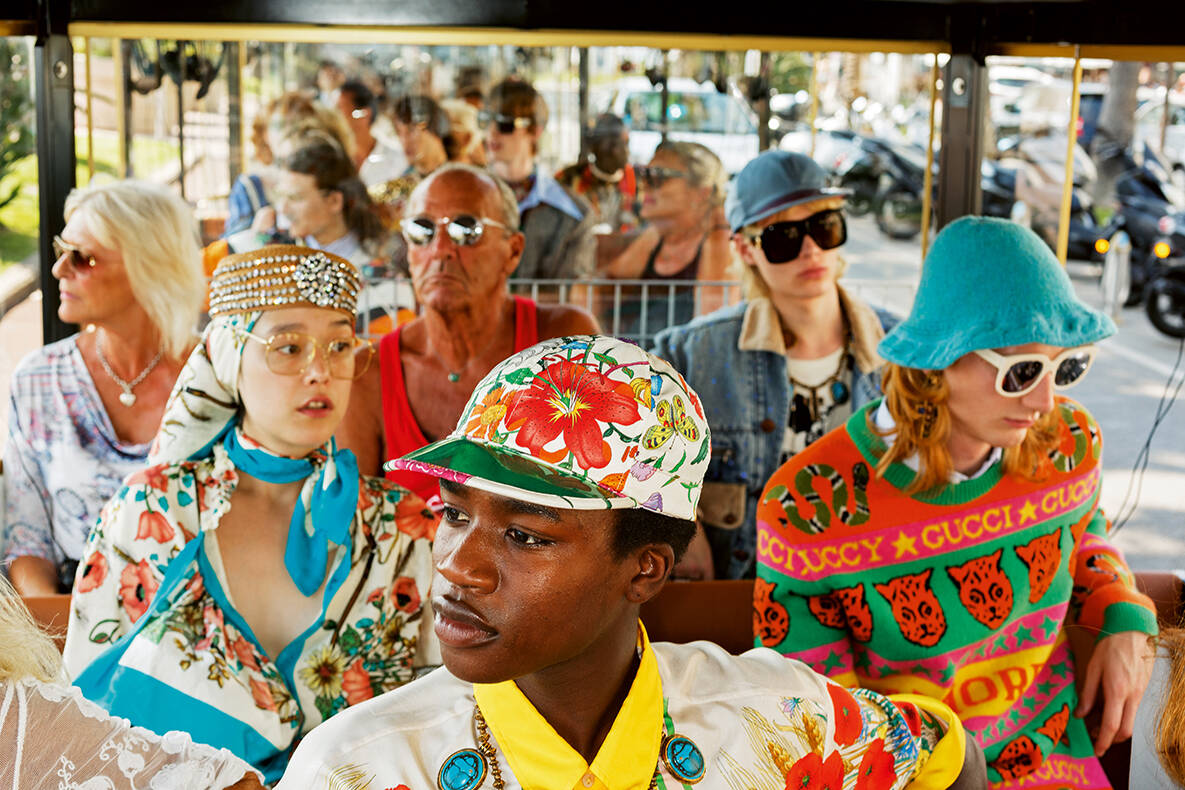 Cannes, France, 2018. Commissioned by Gucci. © Martin Parr
Cannes, France, 2018. Commissioned by Gucci. © Martin Parr
With the Gucci work which I did in Cannes for the look book they had these different models just hanging around. That now famous picture of the orange lady with the glasses was a good example of something I just saw. She was a model resting between one of the shoots that we were doing for the look book. I put her on this sofa, frizzed her hair out and bang! We had a great shot. Pieces of luck like that don’t happen that often, but when they do, you’re very happy.
Fashion shoots seem to be an opportunity to play with colour, texture, and shape more than usual. Is there an element of truth in that? I just go with what is put in front of me. They often ask me about models and some photographers have their favourite models. I’m happy to work with any model really, and it’s the same with what they’re wearing. I don’t like all black, and that’s the colour of the fashion world! That’s the one thing I don’t want to have as it’s very difficult to photograph, black against black. What I want is brightly coloured things and whoever is in them is fine with me.
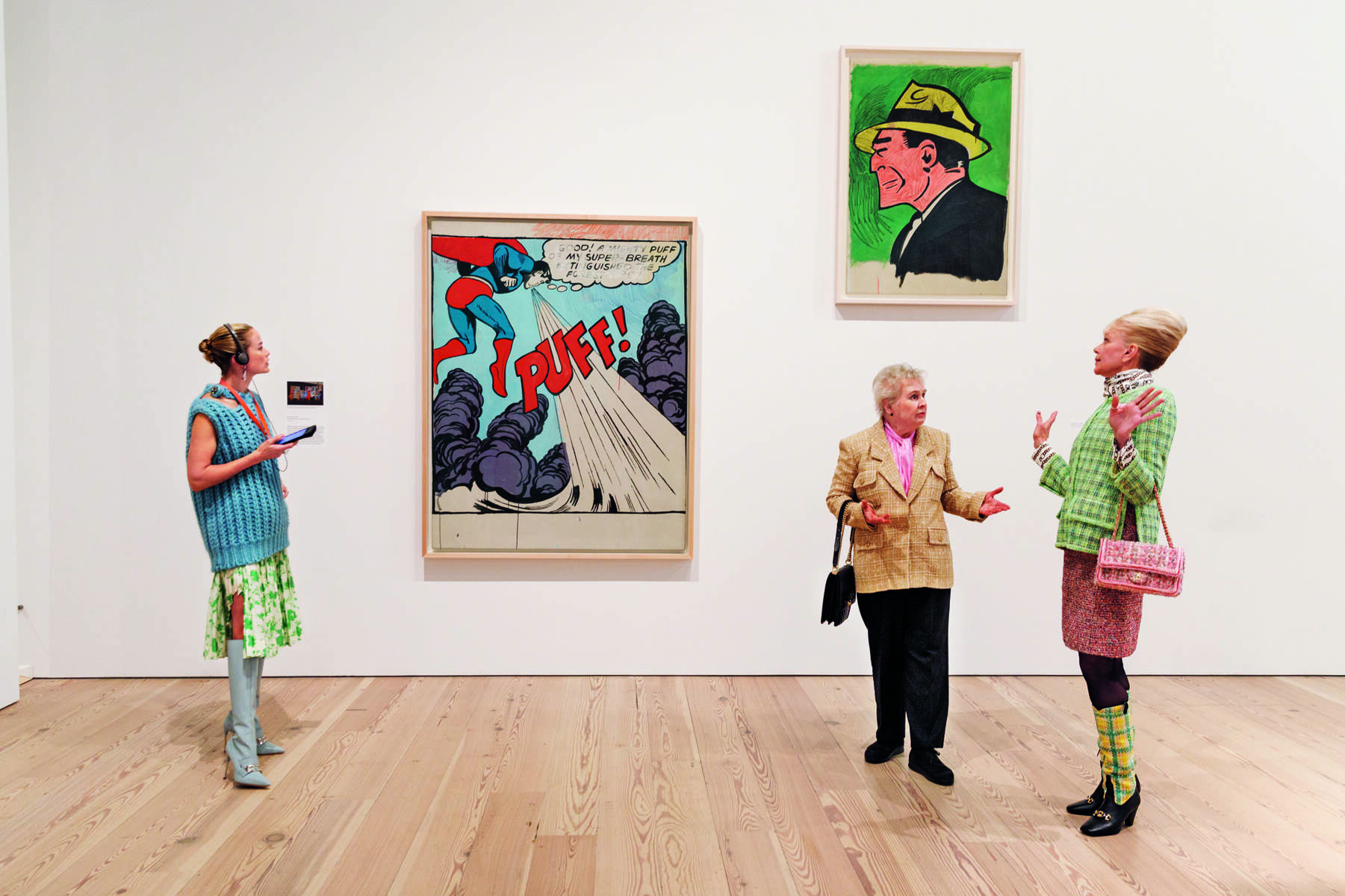 New York, USA, 2019. Commissioned by Vogue USA. © Martin Parr
New York, USA, 2019. Commissioned by Vogue USA. © Martin Parr
If you look at this picture taken at the Guggenheim you’ve got the model on the left and you’ve got the backdrop of the paintings and you’ve got two women on the right who are extras that we had. So I’ve placed everyone very carefully. I’ve used the balance of the whole frame to make it work and I think it turned out to be pretty good. I like the idea of these two women arguing or having a discussion about the paintings they’re seeing.
What do you learn from being in fashion world orbit and viewing its unique forms of creativity? Yeah, it’s interesting. It’s a complicated and interesting world, fashion. I’ve always stated that I don’t know much about it, but I guess I do now because I’ve done quite a few shoots. I like the idea of how you solve a problem with photography. It’s always a challenge. The problem is you’ve got to have someone wearing some clothes. You’ve got to make an interesting picture. And the rest is up to you to try and deliver. So that challenge I’ll never shy away from, and I’ll always enjoy it.
What were the challenging ones? The Jacquemus shoot, which featured 75 boats in Versailles, looks like it could have gone very wrong. . . Yeah, the problem issue can sometimes be when you have a big shoot. I can’t be everywhere at the same time. With that one I could see things going on, but I didn’t get to be behind the scenes with the models because I was on one of 75 boats they’d hired. So in that case I couldn’t be everywhere. I was somewhat limited with what I could photograph.
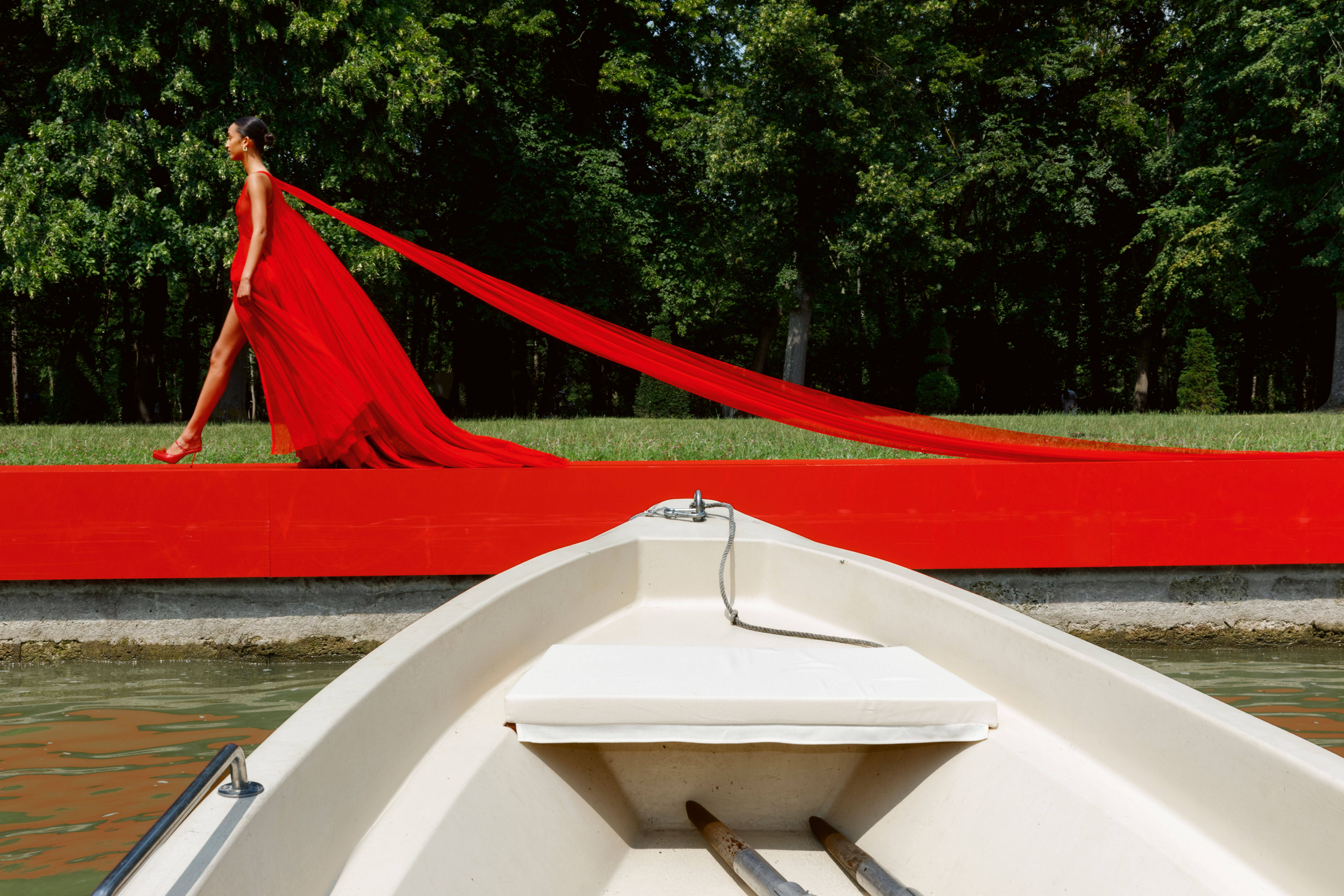 Versailles, France, 2023. Commissioned by Jacquemus. © Martin Parr
Versailles, France, 2023. Commissioned by Jacquemus. © Martin Parr
And if I’m doing a show, for example, I’m always looking for good light at the front. Sometimes you have a setting where everything’s in darkness and that’s difficult to shoot. You need light really so you can use the flash and do an ambient light with the flash combined. So each time there’s a different solution. You always find something though to make it work. That’s one of the things about being a professional photographer, the bottom line is you’ve got to supply the picture. Sometimes the pictures are great, sometimes pictures are just OK.
Tell us a little about one of your more fondly remembered shoots in the book? Going to Senegal for an accessories shoot and placing those into different places within society. That was good. We had a guy who had a tray full of cheap Chinese stuff – everything was probably worth about five dollars – and suddenly in the middle is plonked a two thousand pound Louis Vuitton cigarette case or whatever it was. So I like the fun of doing that, subverting the value of these fashion items.
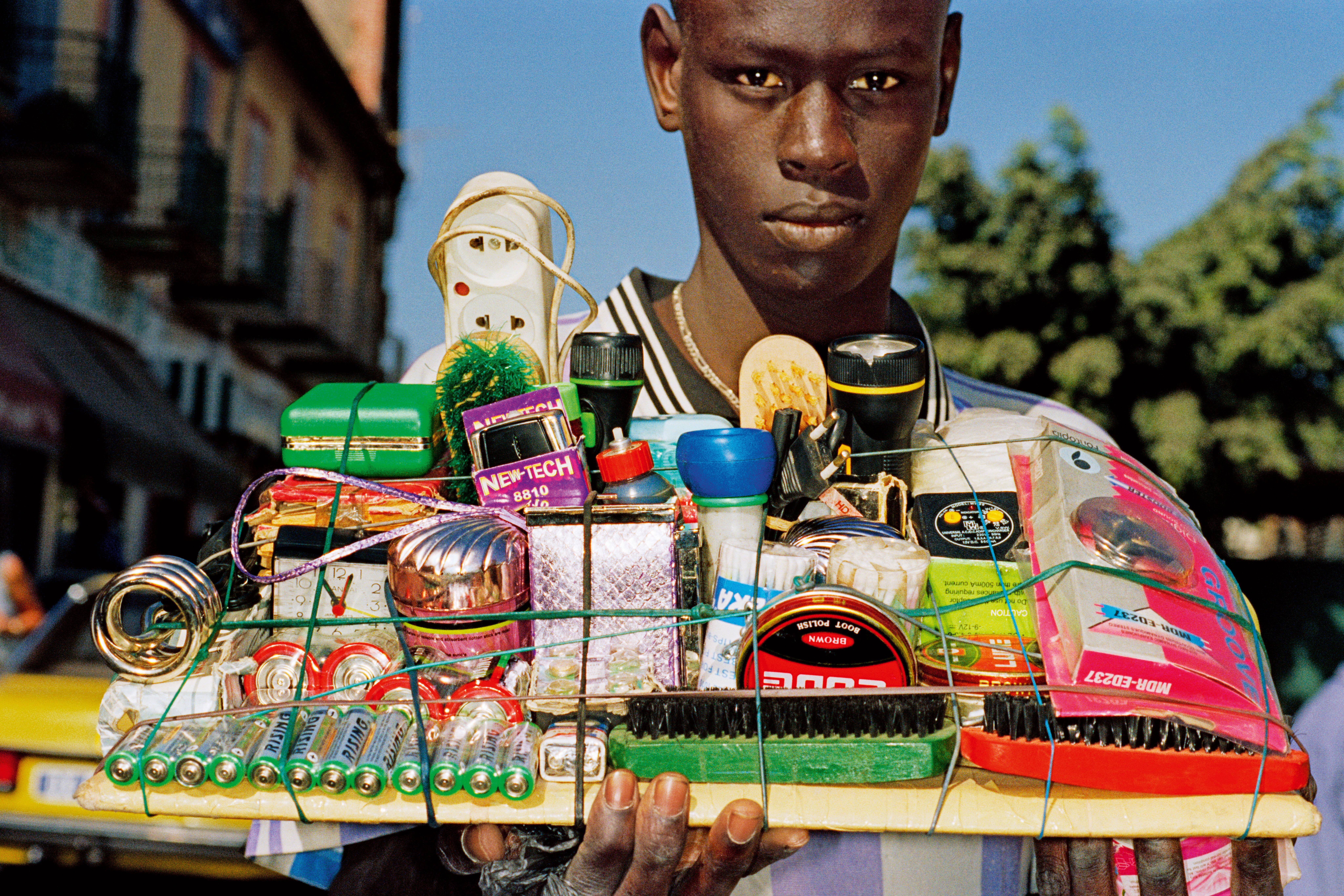 Dakar, Senegal, 2001. Commissioned by Rebel. © Martin Parr
Dakar, Senegal, 2001. Commissioned by Rebel. © Martin Parr
Sometimes I’m doing shoots, and you have a security guard come up with something that’s worth £50,000 or something and they watch it all the time as you put it on a piece of vegetable or whatever and then it goes back to the bag, and they go away. I did that at Borough Market using pretty expensive jewellery in front of vegetables.
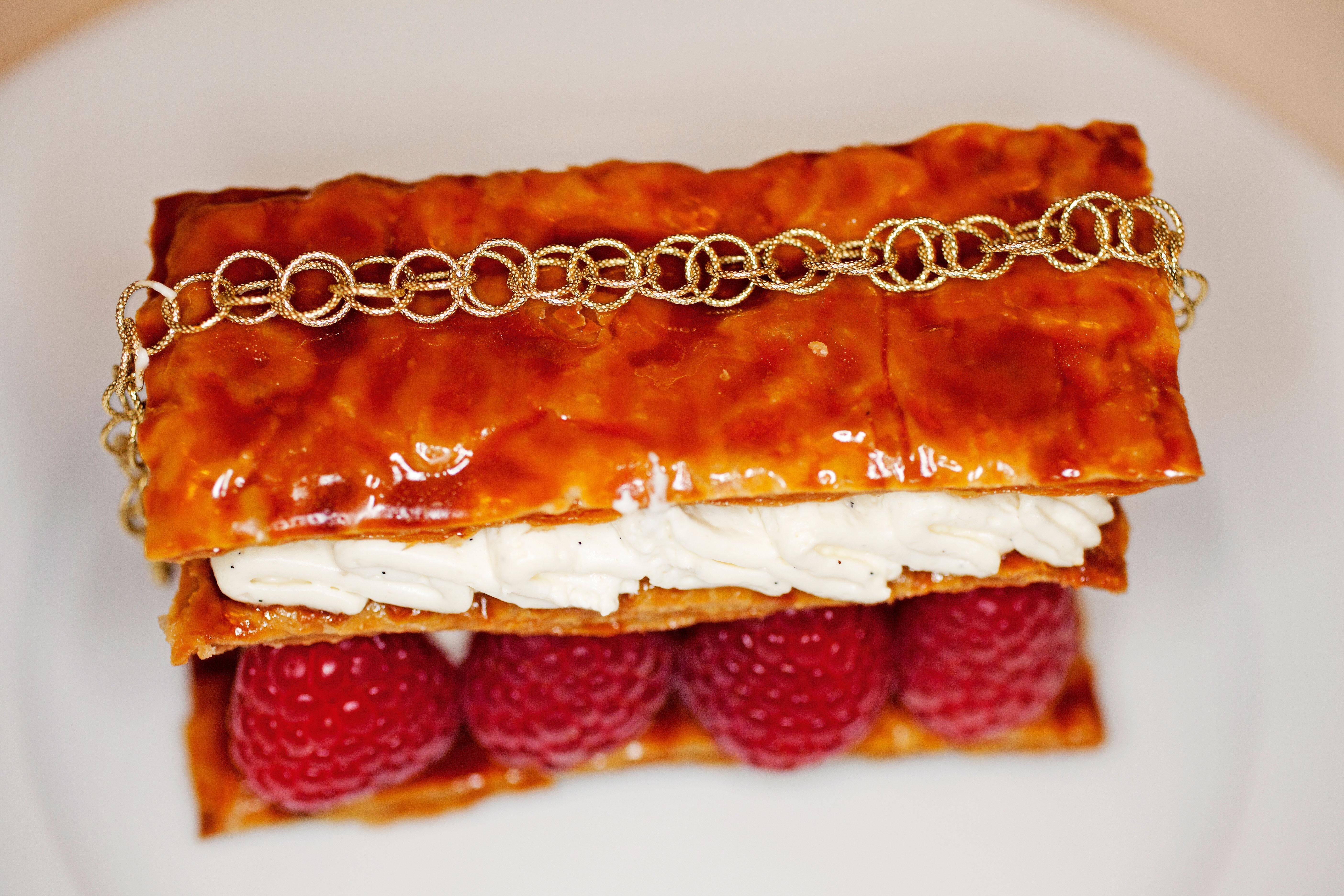 Paris, France, 2011. Commissioned by Stiletto. © Martin Parr
Paris, France, 2011. Commissioned by Stiletto. © Martin Parr
Has fashion photography brought anything to the work we know you more for? First off it’s brought cash in. When you’re working for fashion designers you get very well paid. I have a foundation here, we have eight people working for the foundation and I have to pay them every month, so I need that income and also what I do for Magnum with licensing and, of course, selling prints.
We have three fashion shows coming up. It’ll open in Paris on March 21 then it will open in New York and in Tokyo. So we’ve got three shows of the fashion pictures. And we have a couple of pictures that are already sold out. So yes, I fully expect to sell pictures that are in the Fashion Faux Parr book which is quite an achievement because I think given that the most precious thing you have is your own agenda and your agenda, to a certain extent, has been surrendered. because I’m basically taking on someone else’s agenda.
Fashion photography is full of legends old and new. What are the things you admire about them? What I enjoy more is seeing other photographers who do their own work and do commercial or fashion work too – photographers such as Juergen Teller, Viviane Sasenne, Nigel Shafran. I have huge admiration for how they’ve combined their commercial work with their own work. I guess I put myself into that section now. But I’m not as well versed in commercial work as those photographers are.
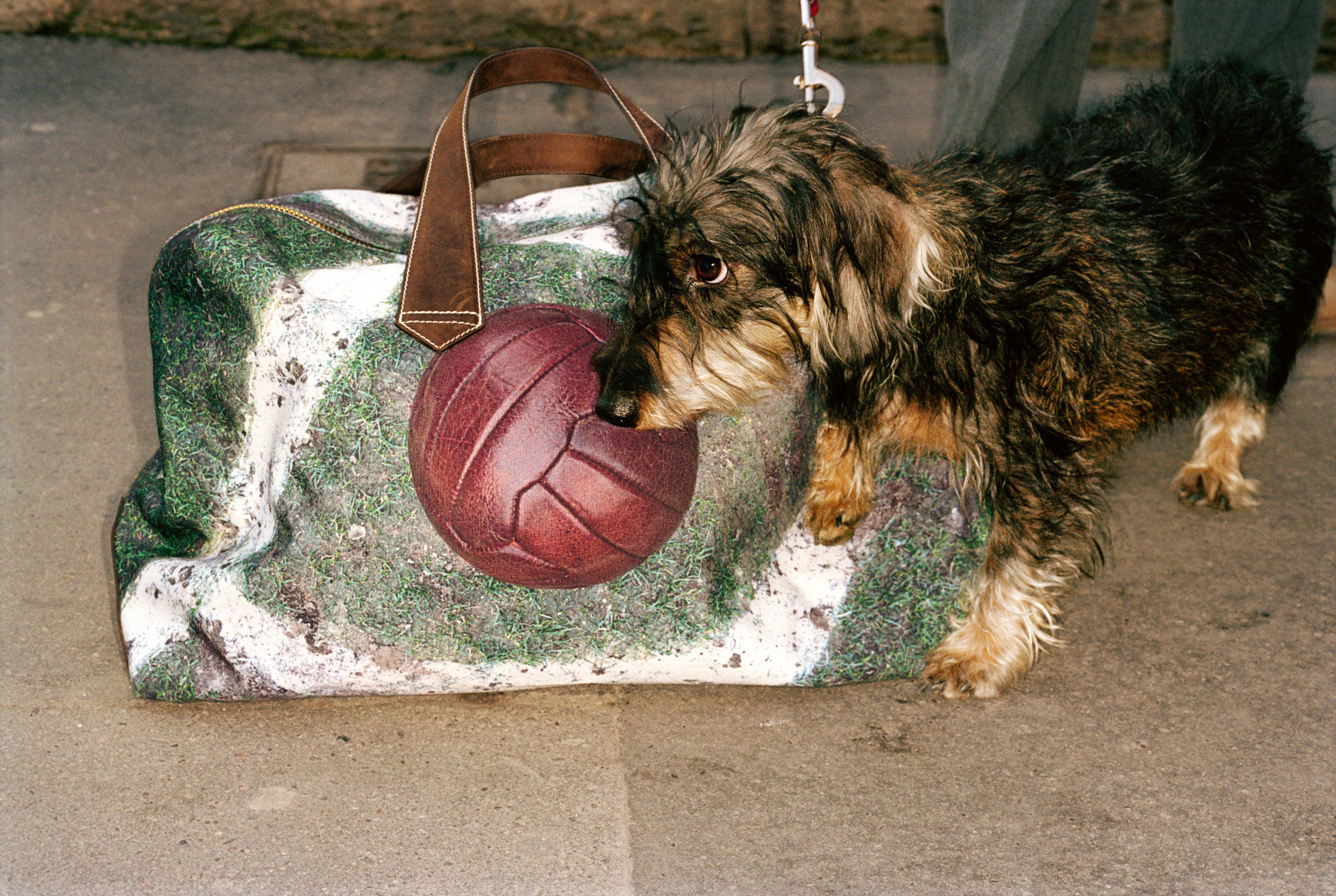 Ilford, UK, 2005. Commissioned by Paul Smith. © Martin Parr
Ilford, UK, 2005. Commissioned by Paul Smith. © Martin Parr
You can’t resist a dog pic, even in fashion, what’s the attraction? Dogs are always good fun to have in pictures. They’re just funny and energetic and a bit bonkers. They can really make a picture. Whenever there is one around I will jump on it and make sure we’ve got a good picture from that. I like using them in the way I also like using older people. Because obviously all the models are very glamorous and beautiful, so I’ve done many shoots for jewellery where I’ve used older ladies. Because, really, they’re the people who are going to go out and buy this stuff. If you’re 25 and a model you haven’t got the money to buy big expensive jewellery item. So it is the older people who will support that. So I like the idea of showing them being fashion models as well.
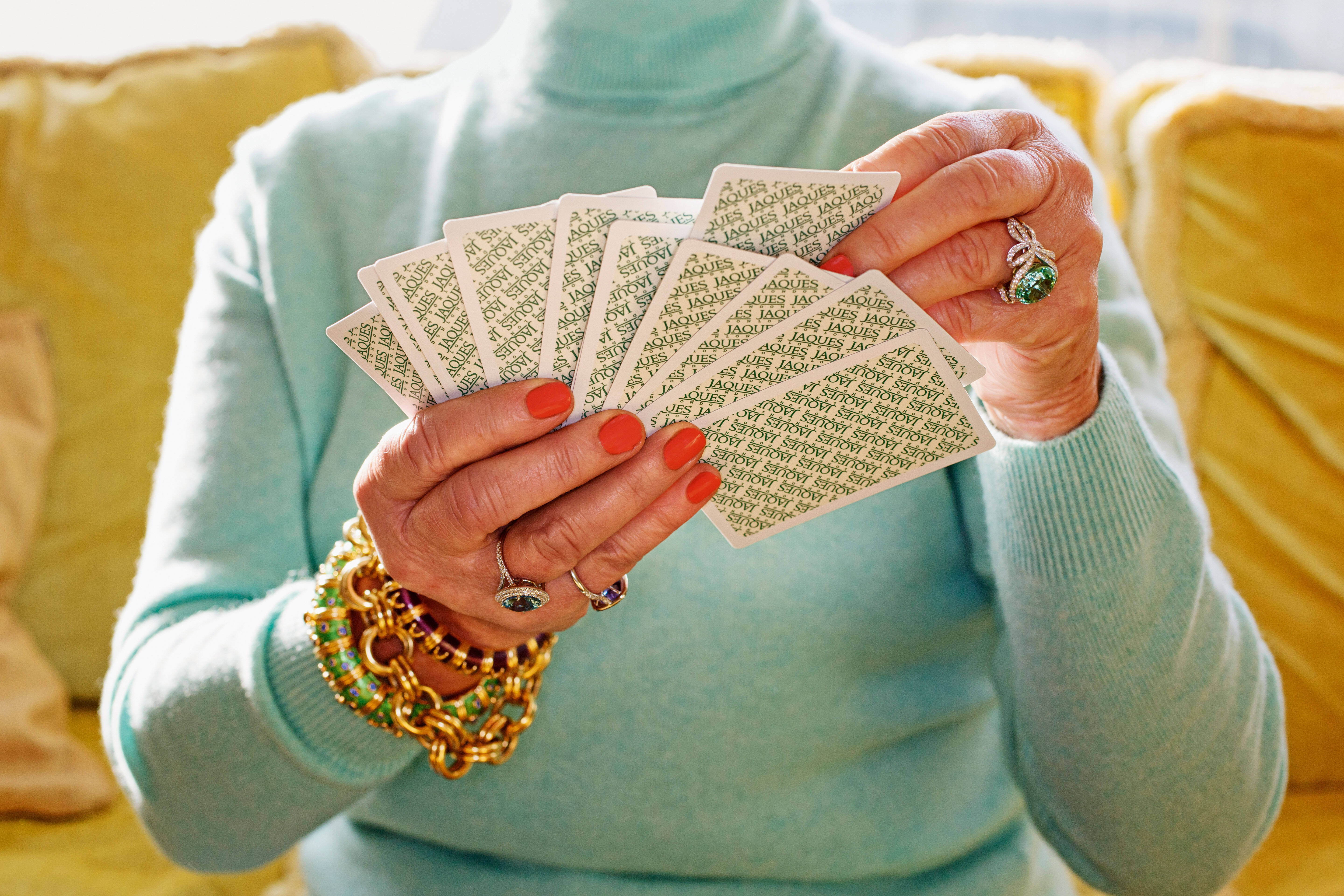 Orpington, UK, 2015. Commissioned by InStyle. © Martin Parr
Orpington, UK, 2015. Commissioned by InStyle. © Martin Parr
Want to see more? Buy Martin Parr’s Fashion Faux Parr here.
